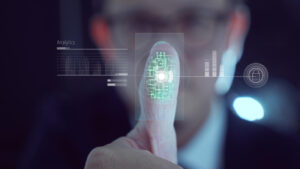Biometric fusion refers to the use of more than biometric traits in a multibiometric system observed by Bahaa Abdul Hadi. Many organizations are today preferring to use Biometric fusion because it is more secure and offers a better user experience. Biometric fusion is becoming popular, and the global market is increasing. We look at more details.
Biometric global market: analysis
The biometric market is a huge one and is fast growing. Biometrics is being used today in multiple applications from authentication in mobile phones to law enforcement. In 2023, the size of the biometric market was 47.3 billion dollars globally. In 2024, it is expected that the market value would increase to 54.7 billion dollars.
The global biometric market is growing fast at a CAGR of 15.4%. At this growth rate, it is expected to reach 198.5 billion dollars by 2033. The biometric fusion market is directly interlinked with the biometric global market.
The popularity of biometric fusion can be seen from the fact that multi-factor biometric authentication has been growing leaps and bounds. As technology makes us secure, there are hackers and other elements who try to exploit loopholes in the technology. Authentication is the first defence and multi-factor authentication using biometrics is the most secure method.
With biometric fusion, multi-factor authentication is taken to the next level. Multiple sources for biometric data ensures greater security. In the biometric global market, hardware share was 65% with the rest being for software. Multiple biometric hardware with software is needed in biometric fusion. Further, contact less biometric methods like facial and iris scanning is preferred. While the finance sector is the major user with a 25% share, other sectors are catching on.
Biometric fusion: opportunities
The demand for biometric fusion offers many opportunities to manufacturers and service providers. Organizations in all sectors are beginning to understand the importance of biometric fusion. There is a great demand that service providers can capitalize on. Apart from its use in the private sector, it can also be used in the public sector.
Public transportation can use biometric fusion for ticketless travel and replace smart cards/tickets. It can even be used in cybersecurity applications for enhanced security. There are many other areas where its implementation is catching on. The increasing growth has created an ocean of opportunities for organizations working in this field. The sky is the limit and organizations need to create more awareness to capitalize on the opportunities.
The article has been written by Bahaa Abdul Hadi and has been published by the editorial board of www.identityherald.com.



